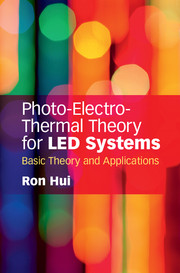Contents
2Steady-State Photo-Electro-Thermal (PET) Theory for LED Systems
3Dynamic Photo-Electro-Thermal Theory for LED Systems
4Determination of PET Model Parameters and Internal Variables
6Chromatic, Photometric and Thermal Modelling of LED Systems

